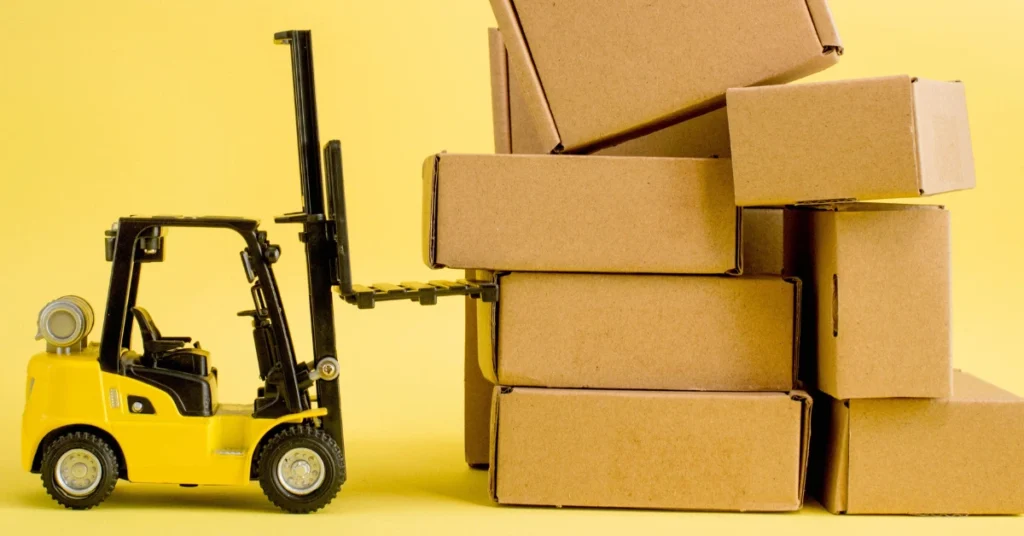In the distribution business, efficiency isn’t just an advantage—it’s your competitive edge.
Starting up a distribution company means more than actually transporting goods, it’s a relationship and ensuring that you know your market and that your operations run efficiently.
Given the right resources, it can both be rewarding and beneficial to your business.
This guide will walk you through the essential requirements of establishing and running a distribution business in India.
Starting from the legal framework to financial management and the choice of product, we have you covered in all aspects for success.
Step 1
Understanding The Indian Distribution Landscape
What is a distribution company?
The answer would be pretty simple. A distribution company is the vital link between manufacturing and retail, or end consumers.
Without distributors, businesses would not find a market for their products easily.
This industry is booming in India where diverse markets with high demand go through rising consumer markets across an urban and rural spectrum.
Let’s talk about the distribution models.
Exclusive Distribution: You are the distributor of a product or brand in a specific region. This is something like selling luxury goods or high-end electronics.
Non-Exclusive Distribution: You share the market with others, and this can bring reduced margins, but a wider range of products offered in the market.
Franchise Model: Here, you simply work under an established brand and business plan.
Self-Owned Model: You create your distribution network from scratch; perfect for those who like full control.
Top Industries for Distribution in India
From FMCG (think snacks and beverages) to pharmaceuticals and e-commerce logistics, the opportunities are endless.
Worth looking into and also includes electronics, beauty products, and agricultural goods.
Step 2
Planning and Research
To start a distribution company is not selling but strategy. That begins with sound planning and research.
Selecting Your Niche
Determine what you want to distribute.
Are you going to distribute fast-moving consumer goods, electronics, or pharma?
You need to pick the right niche. Ask yourself these questions to do so:
- Is there constant demand for this product?
- How is the competition?
- Can you scale this business in the long term?
Market Research
You get to understand your potential customers, competitors, and demand. Here’s how you can simply begin:
Ask Retailers and Consumers: What do they need which is missing in the market?
Analyze Competition: Look at their pricing, product range, and distribution methods.
Study Regional Trends: Preferences in a metro city may vary by a mile as compared to those in Tier-2 or Tier-3 towns.
Set SMART Goals
When the research is there, it’s high time to create goals.
Specific: What do you want to attain? (example: “sign 20 clients in 6 months.”)
Measurable: How do you check the progress?
Achievable: Is it realistically achievable given available resources and available time?
Relevant: does this support your vision for the business?
Time-bound: clearly setting a deadline for it.
Tip: Create a detailed business plan. It doesn’t have to be fancy but should include your goals, market research, and financial projections.
With proper planning and research, you’re already laying a solid foundation for your distribution business. Ready for the next step? Let’s go!
Step 3
Legal and Compliance Essentials
Legal compliance is not the most exciting part of starting your distribution business, but it is one of the most critical.
Think of it as building the foundation of your company, strong compliance today saves you from future headaches.
- Business Registration
First of all, decide on the appropriate structure for yourself. For a small business, proprietorship or partnership firms will do. But if you’re planning for scale, then one has to register for a private limited company or LLP. These structures give credibility and later aid in raising funding.
- GST Registration
Almost every distributor in India needs to register for GST. This way, you will be able to charge GST on goods and claim input tax credit; a huge advantage for managing costs. GST returns must be filed regularly, failing which penalty is levied.
- Licenses and Permits
Different products require special licenses and permits. For example, food and beverages require FSSAI license and some chemicals will require specific permission. Research into the regulations required for your category of product.
- Suppliers and Customers
Contracts are legal agreements that provide protection to all parties involved. Ensure that an agreement with your manufacturer and the retailer clearly define payment terms and delivery timelines in addition to defining liability clauses.
- Maintaining Records
Indian tax laws require maintaining proper books. Record all sales, purchases, and expenses so that tax filing and audits become easy.
Step 4
Operations Setup
Once your legal setup is in place, it’s time to set up your distribution operations. This can be called the engine of your business. Even the best products will not be able to reach customers properly if the operations are not smooth.
- Warehousing
Begin with a warehouse that meets your needs for your products. If your products are perishable, make sure you have cold storage. For non-perishables, consider space, accessibility, and security. A well-organized warehouse reduces delays and errors.
- Inventory Management
An inventory management system will help in real-time stock levels, hence no overstocking and not experiencing stockouts. Your customers are happy and your costs in check.
- Logistics and Delivery
The logistics system is the spine of a distribution business. The choice between fleet ownership and using third-party logistics providers must be made. Develop a smart route for efficient delivery with minimum delivery times and fuel costs.
- Staffing
Hire a reliable team for handling, packing, and shipping goods. Clear roles and responsibilities will keep operations running smoothly.
- Technology Integration
Use technology to simplify operations. Tools for inventory tracking, route optimization, and digital invoicing can save you time and money.
Step 5
Financial Planning for a Distribution Company
Your financial plan is the guide for profitability. Without a good financial plan, even the most promising business in distribution can fail.
- Start-Up Costs
Start by calculating your start-up cost. This will include warehouse rent, transportation costs, technology systems, and salaries. Bear in mind that some costs, like security deposits, occur only one time, while others are recurring.
- Budgeting
A monthly budget helps to track the expenses and revenue of a business. Fixed costs include rent and utilities, variable costs include fuel, and unexpected costs may be the repair of a piece of equipment.
- Cash Flow Management
Since many customers delay their payments, the need to maintain a positive cash flow arises. Provide discounts for early payment to make the businesses pay in time and manage deals with your suppliers for longer credit periods.
- Profit Margins
Set realistic profit margins for each product category. Your margin should cover costs and leave room for profit without pricing you out of the market.
- Financial Tools
Use tools such as accounting software to automate expense tracking and generate financial reports. These reports help you make informed decisions about scaling your business or cutting costs.
- Emergency Fund
Allocate some amount for unexpected events, such as delayed shipments or market slowdown. A buffer keeps your business alive during difficult times.
Step 6
Marketing and Sales for Distributors
Your distribution business thrives on marketing and sales.
- Define Your USP
What are you providing that your competitors don’t? Can you deliver faster, have the best prices, or provide excellent customer service? Define your USP and make it the foundation of your marketing techniques.
- Networking with Retailers and Manufacturers
Be friends with both ends of the supply chain. Attend industry events and join trade fairs. Sustain memberships to local business associations. Networking and finding new opportunities is fun and builds existing ties.
- Online Presence
You don’t have to be a computer giant, but you need some sort of online presence even if your business is just offline. You can maintain a simple website basically communicating services, product categories, and contact details.
- Promotions and Offers
Tie retailers into your offer through discounts for large orders or free shipping for a short time. Incentives like that spur repeat business.
- Sales Training
Ensure that the skills of closing are inculcated among salespeople. Ongoing sessions for negotiation, communication, and current market happenings can go a long way.
Final Thoughts
Starting a distribution business in India is not easy, but planning, legal groundwork, and proper execution will be the keys to success.
Never forget that the challenges you are facing are always stepping stones toward growth.
So, be adaptable, keep learning, and concentrate on building great relationships with your suppliers and customers.
Your hard work today will shape the future of your business. It’s time to get started and turn those dreams into a reality for your distribution business!

